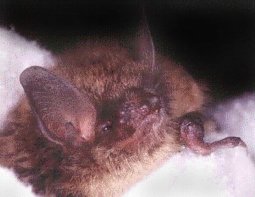|
Bat Community Structure in the Greater Fundy Ecosystem
Broders HG, Forbes GJ
New Brunswick Cooperative Fish and Wildlife Research Unit, University
of New Brunswick, Fredericton (email: hugh.broders@unb.ca)
Hugh Broders is starting the third of three field seasons on the ecology
of bats in the forests of the Greater Fundy Ecosystem. The goals are
to identify the bat community in the GFE, explore the structure of that
community, establish ecology of bats as it relates to resource management,
and assess use of bats as tools for monitoring ecological integrity
in Fundy National Park. Methods involve: (1) using automated bat detector
systems to monitor the spatial and temporal distribution of bat activity,
(2) trapping using mist nets and harp traps, (3) radio telemetry to
track the animals movements through the night and to locate roost trees,
(4) scat, stomach and stable isotope analysis to determine the diets,
and (5) insect trapping to examine the temporal and spatial structure
of the prey communities. This relatively simple bat community is dominated
by two species, the little brown bat (Myotis lucifugus) and the northern
long-eared bat (M. septentrionalis), with very low numbers of eastern
pipistrelles (Pipistrellus subflavus), hoary bats (Lasiurus cinereus),
red bats (L. borealis). The status of silver-haired bats (Lasionycteris
noctivagans) and big brown bats (Eptesicus fuscus) is unclear.

A little brown bat
Click
to Return to the Main Page
|



